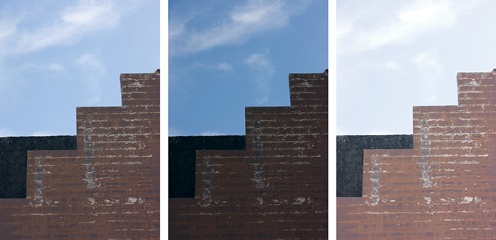Exposure Bracketing
Now that I've thrown all this exposure theory at you and loaded up your head with all these things to remember, it's time to learn the easy solution to the whole exposure thing: Rather than worry about trying to nail the exposure with one shot, just shoot the same shot a few times with different exposure settings. This process is called bracketing.
Bracketing is very simple. You shoot one shot at the camera's recommended metering, then another shot underexposed, and another shot overexposed. How much to over- or underexpose depends on how tricky the scene is and how cautious you are.
For example, if you're in a situation where you're not sure of the exposureâmaybe there's a big mix of bright and dark tonesâthen you might want to bracket your shots. Or, if you're shooting a very bright or very dark object and aren't sure how to expose to properly render the tones, then bracketing can be the answer.
With exposure compensation, it's very easy to bracket. Shoot a shot, set exposure compensation down, shoot another, and then dial it up and shoot a third.

Figure 7-26. Here's a bracketed set of the same scene. The left-most image was shot as the camera metered it, the second image is underexposed by 1 stop, and the third image is overexposed by one stop.
Bracketing does not make you a wimpy photographer! It does not mean you don't know what you're doing or that you're ...
Get The Canon EOS Digital Rebel XS/1000D Companion now with the O’Reilly learning platform.
O’Reilly members experience books, live events, courses curated by job role, and more from O’Reilly and nearly 200 top publishers.

